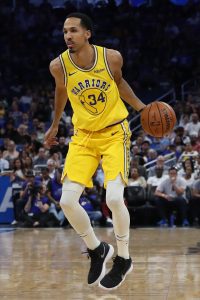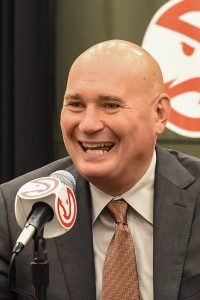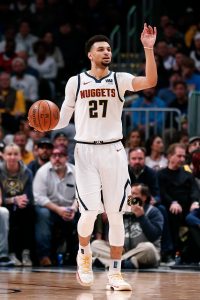We’re not even two full weeks into the NBA’s 2019 free agent period, but the list of noteworthy unsigned players has dwindled in a major way since the evening of June 30.
Two names on our list of the year’s 50 best free agents don’t have a formal agreement in place with teams, and that’s only because deals they initially agreed upon are now in jeopardy.
[RELATED: 2019 NBA Free Agent Tracker]
Marcus Morris, who initially appeared headed to San Antonio on a two-year contract, is now re-evaluating his options and is said to be mulling an offer from the Knicks. New York was able to gain the flexibility to make that offer to Morris because the team’s two-year deal with Reggie Bullock has to be re-worked due to an issue that arose during Bullock’s physical.
Besides Morris and Bullock, the rest of our top 50 free agents are off the board. So are most of the names we mentioned as “honorable mentions” on that list — swingman Justin Holiday and stretch four Trey Lyles are the only players in that group who have yet to secure deals.
Still, there are a handful of intriguing names out there for teams still scouring the open market for potential bargains. Here’s a quick look at some of those free agents:
Point guards:
In addition to veteran journeymen like Jose Calderon, Devin Harris, Raymond Felton, and Jeremy Lin, the list of remaining point guards includes former lottery picks such as Trey Burke and Cameron Payne, and young players like Frank Mason, Isaiah Briscoe, and Shaquille Harrison. Jerian Grant and Shelvin Mack are among the other free agents who saw regular minutes as backups last season.
The most appealing target on the point guard market may be one who is not technically a free agent yet — Shaun Livingston is expected to clear waivers on Friday.
Wings:
Bullock and Holiday are probably the most notable veterans in this group, but Kyle Korver isn’t far behind. At age 38, he doesn’t contribute much more than three-point shooting, but his outside stroke remains deadly.
Jamal Crawford, Ian Clark, David Nwaba, Iman Shumpert, Jonathon Simmons, Vince Carter, Lance Stephenson, and Thabo Sefolosha are among the other most wings available who could play rotation roles in 2019/20.
Stretch fours:
Lyles isn’t the only power forward with an outside shot who is still on the board. Ryan Anderson fits that bill, as do Jonas Jerebko and Dante Cunningham. Dragan Bender never developed into that sort of player, but he’s still just 22 years old and could be worth a flier.
Carmelo Anthony probably can’t realistically be considered a stretch four, but we’ll include him here — we haven’t heard much about potential landing spots for him this offseason though, outside of some speculation that he’ll become the Lakers’ 15th man.
Big men:
Teams in need of a veteran center still have a few options. Tyson Chandler is out there, as are Joakim Noah, Nene, Kosta Koufos, Amir Johnson, Zaza Pachulia, and Greg Monroe.
Pau Gasol is still recovering from a procedure on his foot, but he wants to keep playing and could be a worthwhile addition if he gets healthy.
Here are our full lists of remaining free agents by position/type and by team.
Photo courtesy of USA Today Sports Images.
 The Hawks‘ inactivity on the free agent market so far is unsurprising. When he looked ahead to the free agent period
The Hawks‘ inactivity on the free agent market so far is unsurprising. When he looked ahead to the free agent period 